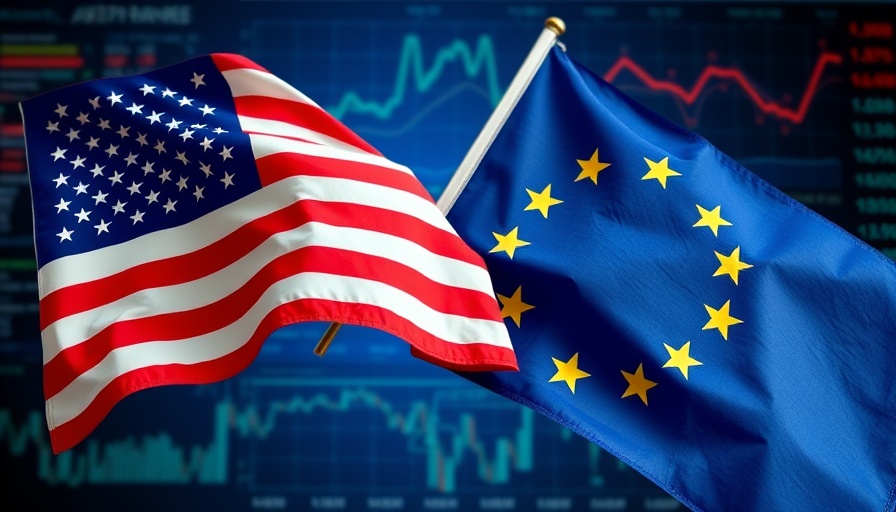
Trump's Trade Strategy: The 15% Tariff Standpoint
As President Donald Trump prepares for a pivotal trade meeting, he has made it clear that he is committed to maintaining tariffs on European goods at no less than 15%. This significant stance comes amidst ongoing discussions regarding the U.S.-European Union trade relationship, which has been fraught with tension and disagreements. By standing firm on this tariff threshold, Trump signals a desire to protect American industries while negotiating terms that favor U.S. interests.
The Economic Landscape at Stake
The backdrop of these negotiations is crucial for understanding the implications of Trump's tariff policy. Tariffs serve as a tool for a nation to exert economic pressure on foreign governments, encouraging them to adopt favorable trade practices. By maintaining a minimum tariff rate, Trump aims to safeguard domestic jobs and manufacturing sectors from what he perceives as unfair competition. This has brought the issue of international trade directly into the realm of American economic security and jobs.
Potential Implications for American Consumers
While the administration argues that tariffs can bolster domestic production, it is essential to consider how they might affect American consumers. Higher tariffs on imported goods often lead to increased prices for consumers, who may find themselves paying more for everyday items. This reality poses a challenge for many families who are already navigating the rising costs associated with inflation. As consumers, the impact of these decisions may often outweigh the potential benefits of protecting American jobs in the long run.
Historical Context: Tariffs and Trade Wars
To fully appreciate the significance of Trump's trade strategies, it's essential to understand the historical context in which tariffs have played a pivotal role. Historically, tariffs have been a double-edged sword. For instance, during the Great Depression, the U.S. faced severe retaliation from other countries following the Smoot-Hawley Tariff, which led to a plunge in international trade. Today's trade landscape is different, but the possibility of a similar fallout exists. Understanding these historical lessons is crucial for policymakers and citizens alike.
Future Predictions: What Lies Ahead for U.S.-EU Relations?
Looking forward, the upcoming trade discussions can set a precedent for U.S.-EU relations in the years to come. Should the EU retaliate against the U.S. tariffs, we may enter a cycle of economic conflict that could disrupt markets globally. Experts warn that continued tariff escalations may provoke the EU to implement counter-tariffs, which can directly impact American businesses overseas and create uncertainty in global markets.
Counterarguments: The Risks of Tariff Policies
While advocates of tariffs argue that they protect American jobs, critics contend that tariffs can be detrimental to the economy. Many economists believe that the U.S. economy thrives on free trade and that imposing tariffs could lead to a decline in economic growth. With warnings from economists echoing through financial news channels, it becomes evident that, while focused on protecting domestic interests, there is a significant risk of facing economic isolation.
Conclusion: Why This Matters Now
The stakes are high as President Trump heads into this significant meeting. As citizens, understanding the ramifications of these tariffs on our economy and daily lives enables us to engage in meaningful dialogue about our national interests. Being informed about trade policies not only positions us to better understand economic decisions made at the federal level but also empowers us to hold our leaders accountable.
Stay tuned for breaking news to track the evolution of trade negotiations and their potential impact on the U.S. economy.
 Add Element
Add Element  Add Row
Add Row 



Write A Comment